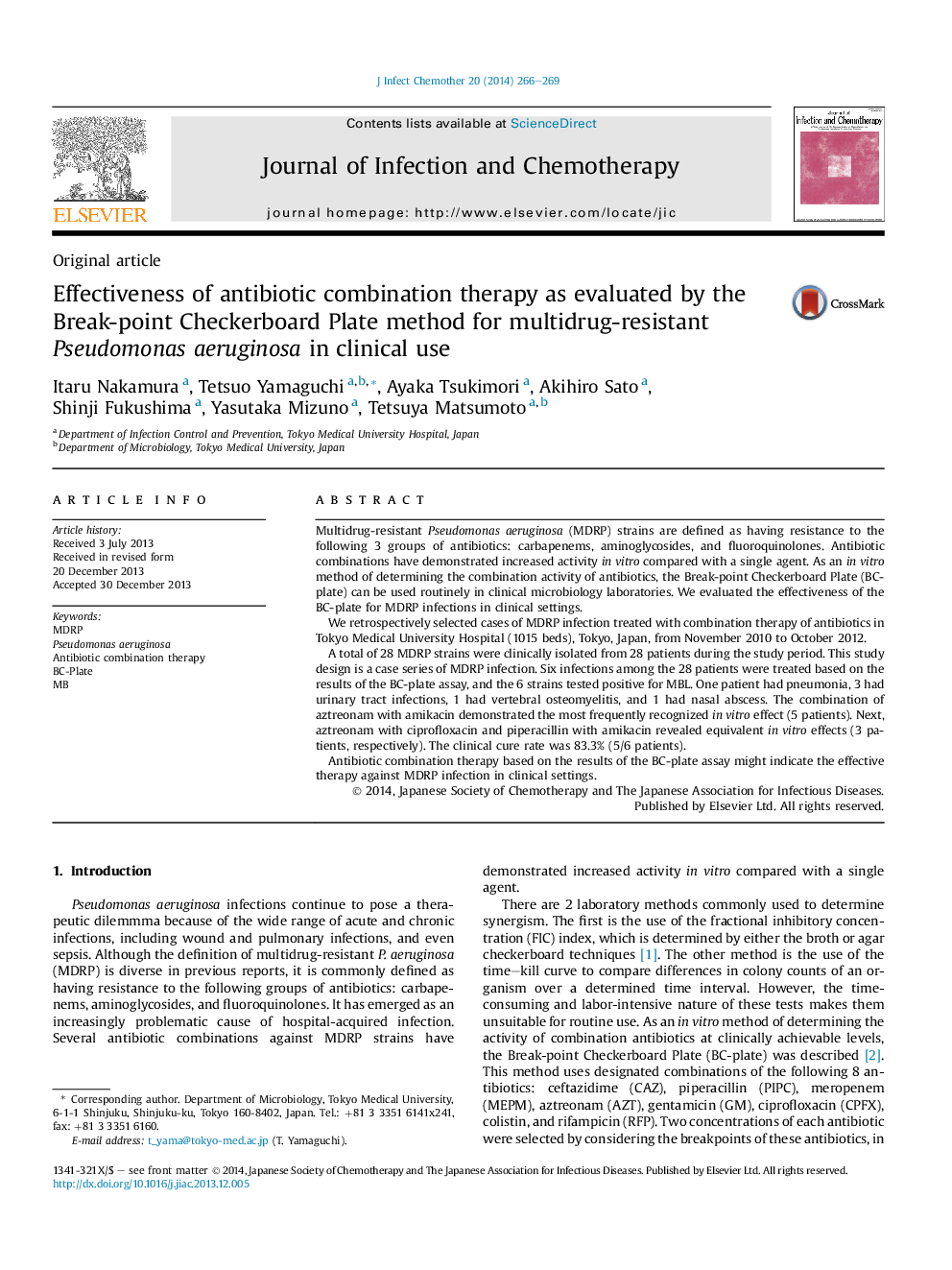| Article ID | Journal | Published Year | Pages | File Type |
|---|---|---|---|---|
| 3376957 | Journal of Infection and Chemotherapy | 2014 | 4 Pages |
Multidrug-resistant Pseudomonas aeruginosa (MDRP) strains are defined as having resistance to the following 3 groups of antibiotics: carbapenems, aminoglycosides, and fluoroquinolones. Antibiotic combinations have demonstrated increased activity in vitro compared with a single agent. As an in vitro method of determining the combination activity of antibiotics, the Break-point Checkerboard Plate (BC-plate) can be used routinely in clinical microbiology laboratories. We evaluated the effectiveness of the BC-plate for MDRP infections in clinical settings.We retrospectively selected cases of MDRP infection treated with combination therapy of antibiotics in Tokyo Medical University Hospital (1015 beds), Tokyo, Japan, from November 2010 to October 2012.A total of 28 MDRP strains were clinically isolated from 28 patients during the study period. This study design is a case series of MDRP infection. Six infections among the 28 patients were treated based on the results of the BC-plate assay, and the 6 strains tested positive for MBL. One patient had pneumonia, 3 had urinary tract infections, 1 had vertebral osteomyelitis, and 1 had nasal abscess. The combination of aztreonam with amikacin demonstrated the most frequently recognized in vitro effect (5 patients). Next, aztreonam with ciprofloxacin and piperacillin with amikacin revealed equivalent in vitro effects (3 patients, respectively). The clinical cure rate was 83.3% (5/6 patients).Antibiotic combination therapy based on the results of the BC-plate assay might indicate the effective therapy against MDRP infection in clinical settings.
